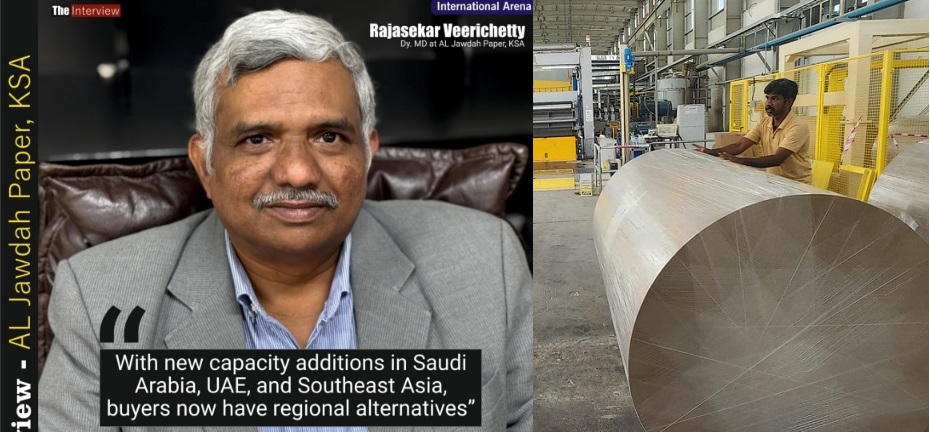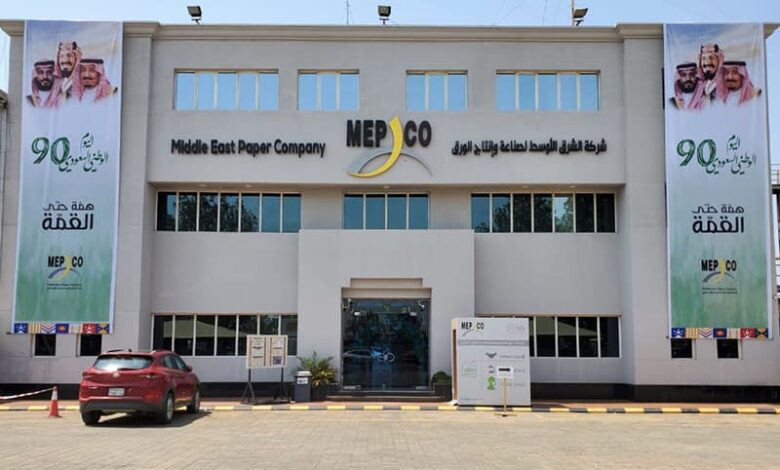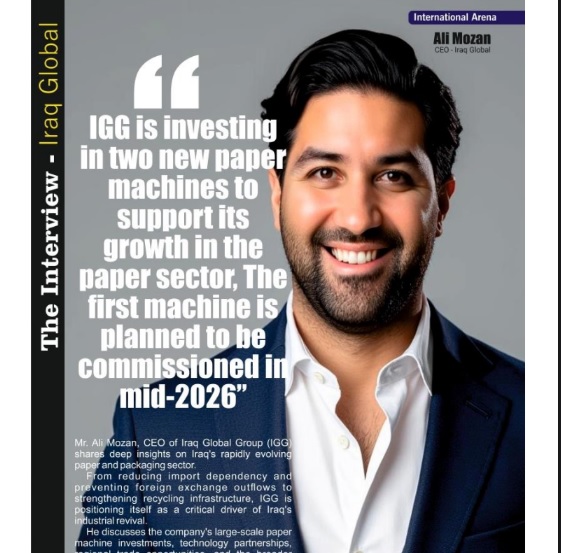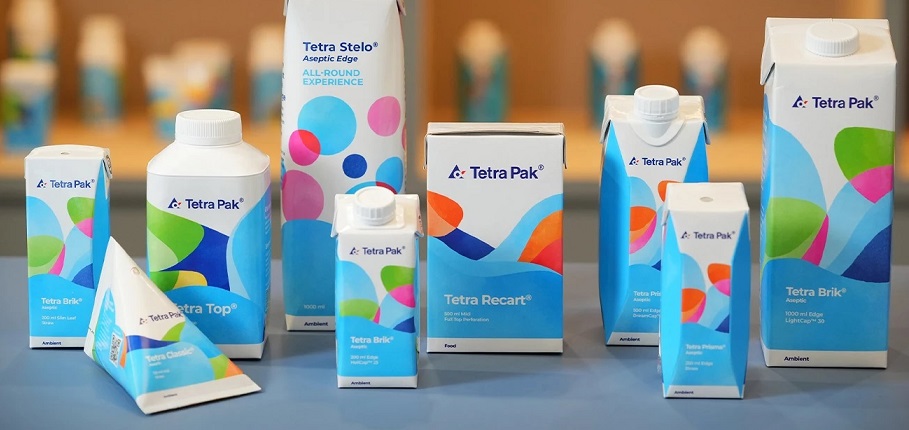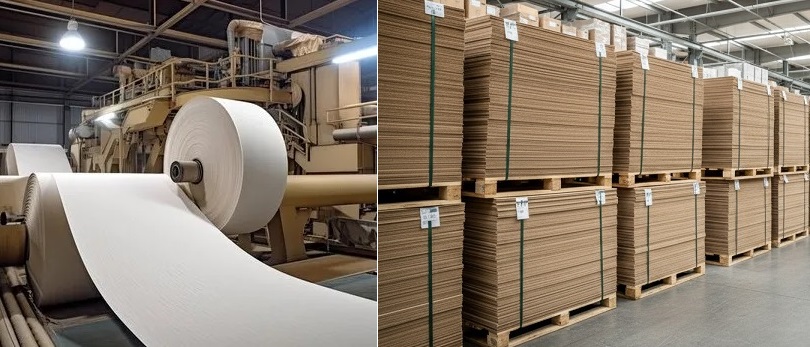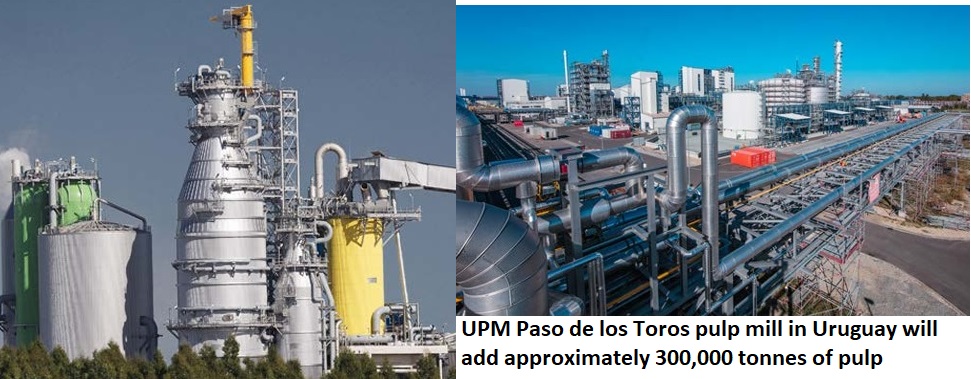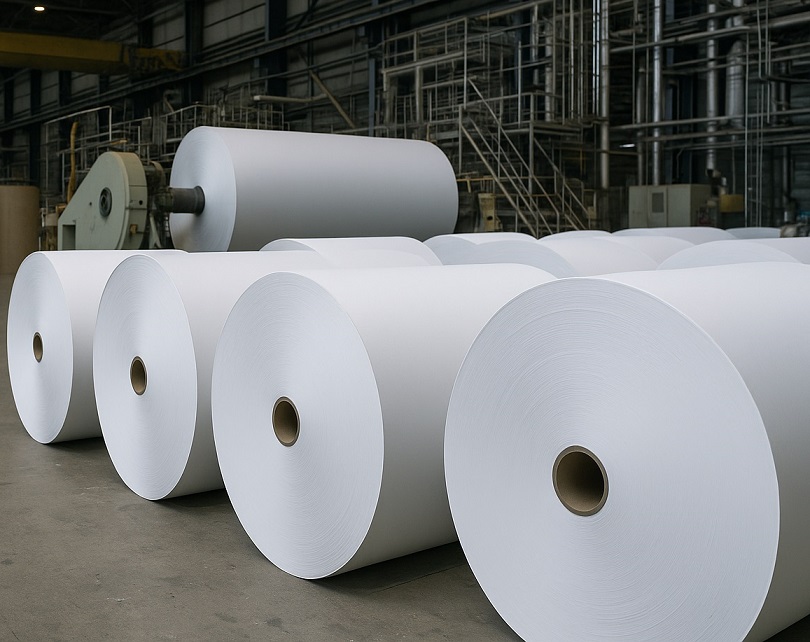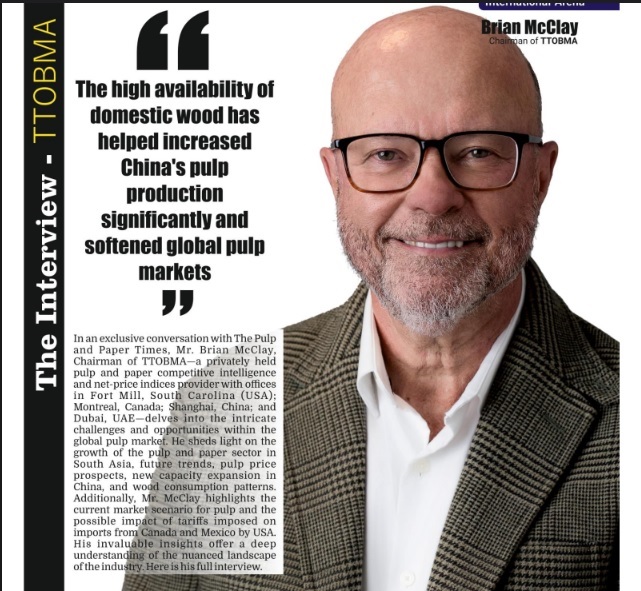You can use the most common printing methods on Paptic® materials, but they have been especially developed for flexible packaging applications, says Mr. Tuomas Mustonen, CEO and Co-Founder of Paptic
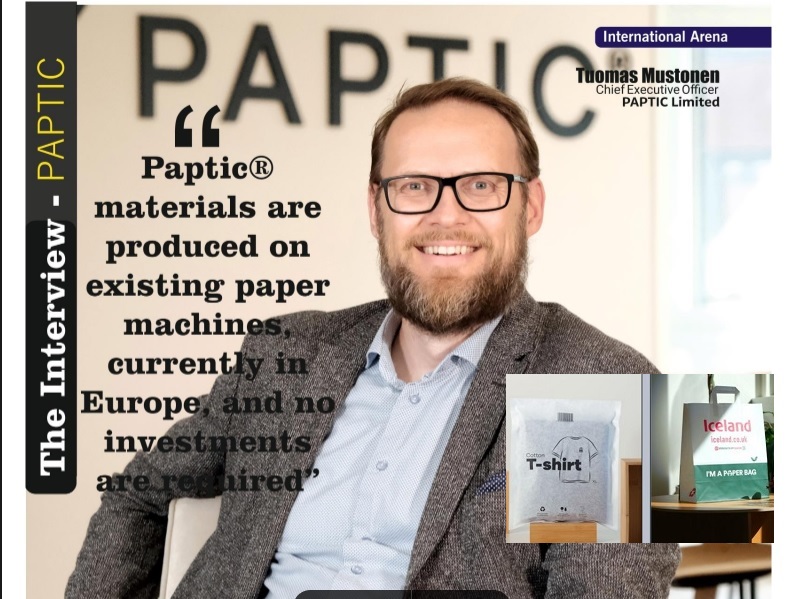
Paptic® materials do not inherently have barriers but can be converted like conventional papers
-Paptic® materials are already available in the Indian market and are primarily supplied to the textile industry
-There are numerous flexible packaging applications where functionalities that Paptic can provide sustainably are required
Paptic® is a wood-fibre-based and recyclable material developed to replace plastic films in flexible packaging. Paptic brings sustainable and innovative solutions to the market that meet the needs of the current world, including the strictest sustainability criteria. In an exclusive interview, Mr. Tuomas Mustonen, Chief Executive Officer and Co-Founder of Paptic Limited, discusses the sustainable alternative material to replace plastic films in flexible packaging and its potential for scaling in the global packaging markets. Here are his views:
The Pulp and Paper Times:
Q: Please give us a brief introduction to Paptic and its raw material, which claims a unique combination of sustainability, strength, and positively distinctive haptic properties.
Paptic® is a wood-fibre-based and recyclable material developed to replace plastic films in flexible packaging. The main raw material of this innovative material is wood fibres originating from sustainably managed forests.
We take a holistic approach to sustainability – from raw material sourcing, production, use, brand, and consumer wishes, as well as to recycling and end-of-life options of material in the circular economy. In RCD we focus on issues related to sustainable and bio-based raw materials, best packaging material properties, contributing to decarbonization, supporting circular business models, and enhancing fibre circulations. We always work to ensure our materials are safe to use.
Q: Moisture, gas, water, oil, and grease create a limitation in paper packaging. How much does Paptic trust its solutions to overcome this limitation?
Paptic® materials do not inherently have barriers but can be converted like conventional papers. This means that you can for example add a different kind of barrier to the material to achieve the desired functionalities mentioned in the question.
Q: Paptic is made of renewable raw materials from sustainably managed forests, comprising renewable wood fibers. Do we believe that Paptic's raw material will outperform paper in the long run? Does Paptic also possess properties for writing and printing applications?
Paptic® materials replace plastic films in applications where specific functionalities such as flexibility, durability, silence, and non-scratching are required; a performance that traditional papers cannot provide. There are numerous flexible packaging applications where functionalities that Paptic can provide sustainably are required.
You can use the most common printing methods on Paptic® materials, but they have been especially developed for flexible packaging applications.
Q: Environmental, Social & Governance (ESG) demands are increasing nowadays. How does Paptic integrate ESG into its operations?
Environmental considerations have been at the heart of our strategy and day-to-day work since the very beginning: Paptic was founded to replace plastic films in packaging with a renewable, recyclable alternative that are according to circular economy thinking and transition towards and away from linear and fossil-based economy.In our thinking E, S, and G are in strong balance. In our thinking and also in making an impact, the well-being of people and nature go hand in hand, and all that needs to be done reliably and transparently.
As a concrete example on “E”: For an SME of just over 40 people, Paptic has a large innovation team with a strong research background. We have wanted to invest in product development and innovations, in which environmental performance is a key dimension. We perform towards low carbon performance and have succeeded very well in this progress since 2018. At the same time, we focus on taking good care of people in the value chain and putting effort continuously to learn more.
positive impact towards nature is driving us. Awareness of the detrimental effects of plastic waste accumulating in the environment motivated us to develop the Paptic® material. The same awareness of environmental but also social challenges is driving us to further develop our product and, together with our contract manufacturers, set up mechanisms to ensure the environmental performance is on the level we want it to be and people across our value chain are treated well.
The world needs companies that were born and established to be sustainable. Paptic is one of those companies. It brings sustainable and innovative solutions to the market that meet the needs of the current world, including the strictest sustainability criteria.
Q: There have been more stories about ‘Greenwashing,’ especially concerning paper packaging and food-grade packaging. What is the truth behind this ‘misconception’? Don’t you think Greenwashing in developing countries deceives consumers?
“Greenwashing” is the unfortunate flipside of an extremely positive development: people’s increasing willingness to choose solutions that help address the major environmental challenges we’re facing. Unfortunately, there are companies who are trying to turn this into greater profits with false or misleading sustainability claims.
It is also about eagerness to communicate, but unfortunately sustainability is such a large topic that sometimes certain terminologies are used in a misleading way – with or without purpose. In any case we need to address greenwashing, and be clear in the comms and offer clear, reliable and understandable information. This is what we are committed to.
“Greenwashing” has done a great disservice to both consumers and companies making truly sustainable products. For customers, greenwashing has made it increasingly difficult to make informed choices. At the same time, companies that are investing in continuous improvement of their sustainability performance, are finding it harder to communicate and demonstrate their true level of sustainability. The key question is how to stand out from those making misleading or false promises.
At Paptic, we believe the only way to serve our customers and start rebuilding trust in sustainable products is to have as solid evidence base for our claims as possible. Openness and transparency on the facts on which we base our claims, but also on uncertainties and unknowns, is essential.
Q: Please let us know Paptic's plan to scale up its production facility across the world, particularly its plan for India.
We’ve just renewed our growth strategy and our plan to scale up our production globally; first to increase our production capacity still in Europe and after that in the Far East, where for example the vast majority of the world's garment packaging is manufactured.
Paptic® materials are already available in the Indian market and are primarily supplied to the textile industry. Mr. Ganesh Purohit from Port of Trust Trading Pty. Ltd. represents Paptic in the market.
Q: Can Paptic be produced on the existing paper machine in a mill? Or are any changes required? Indian Paper Mills have sustainably managed forests; is Paptic interested in transferring its raw material patent/know-how for local production?
Yes, Paptic® materials are produced on existing paper machines, currently in Europe, and no investments are required. As said in my answer to the previous questions, we are planning to expand our production globally and after Europe to the Far East where large volumes of flexible packaging materials are required, as the global manufacturing hub for many consumer products.
Q: What is the Life Cycle Analysis (LCA) of paper-based packaging? In a recent interview with The Pulp and Paper Times, the World Packaging Organization (WPO) claimed that there is seven times less impact if we opt for plastic bags, and even more so if we recycle that plastic. It is not just a bag or box; there’s a lot of science and technology that go behind the creation of that particular packaging component. How do you respond to this claim in terms of your innovation?
As with all research results, we need to be mindful of assumptions underlying any LCA. Much of the results depend on scope definition: What are the boundaries within which you calculate the emissions? What figures do you use as recycling rates for different types of packaging? What estimates do you take as a basis for assessing the impacts if materials end up in a landfill? Each choice affects the results, some in a drastic way.
Many of the existing LCAs comparing the environmental impacts of plastic packaging to paper-based packaging are limited to “one life”. They do not take into account the reuses of fibres that make up paper-based packaging. Yet, calculating fibre circulation in into the LCA is absolutely key to have an accurate understanding of the environmental impacts of paper-based packaging. When paper-based packaging has been used up, the fibres it consists of can be reused for making new packaging. Valuable raw material stays in the economy. In the end, when fibres are no longer fit after several uses, the fibres biodegrade.
Regarding the future, we are sure that also understanding of the LCA will improve, and therefore, also ability to understand and “read” the LCA will develop, and the role of biobased materials from sustainable sources will be prioritized over the use of fossils whose issues regarding the feedstock and end-of-life are widely recognized.
Q: Does Paptic provide liquid packaging solutions as well?
Currently we don’t have any materials especially developed for liquid packaging in our offering.
Q: We are aware that fibers get shorter and shorter as they're recycled, and we can make products out of paper and board that lend themselves to better recycling and that can be recycled more than seven times. How do you support Paptic’s raw material for longer recyclability versus plastic?
In general, the recycling rate of plastics is low compared to the recycling rate of fibre- based materials. Typically, LDPE (plastic, that is most often replaced with Paptic®
materials in flexible packaging) can be recycled only once because the quality is so degraded. Wood fibres used in Paptic® materials are exceptionally good for the recycling streams and hence we expect them to stay in the loop at least for those seven times.
Q: In developing countries, packaging costs factor into retail products; companies are more aware of product pricing and want to keep it suitable for consumers. How do you evaluate the price of plastic or paper packaging against Paptic's sustainable packaging? Do you believe it will sustain in the long run?
-We are still a fairly new innovation in the market and our price level is slightly higher in comparison to conventional plastic and paper. Yes, I do believe that this will be overcome in the near future. All our development actions in the supply chain and production volumes driving economics are increasing our efficiency of today. With our contract manufacturing business model, we can increase our production capacity in line with the demand growth.
Q Any message for Indian Paper & Packaging Industry
The transition from oil-based packaging to more sustainable alternatives is inevitable. Global brands are leading this transition and are actively seeking alternatives to replace plastic. Paptic has proven its effectiveness in various flexible packaging solutions, and cumulatively, by 2030, 250,000 tons of Paptic® will have been delivered to the market.
Web Title: You can use the most common printing methods on Paptic® materials, but they have been especially developed for flexible packaging applications, says Mr. Tuomas Mustonen, CEO and Co-Founder of Paptic




 Join WhatsApp Group
Join WhatsApp Group Join Telegram Channel
Join Telegram Channel Join YouTube Channel
Join YouTube Channel Join Job Channel (View | Submit Jobs)
Join Job Channel (View | Submit Jobs) Join Buy Sell Channel (Free to Submit)
Join Buy Sell Channel (Free to Submit) Paper News Headlines Channel (Free to read)
Paper News Headlines Channel (Free to read)




